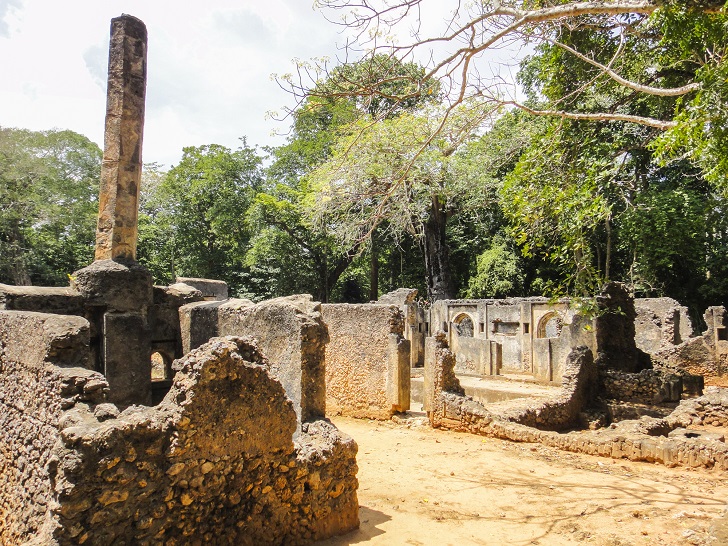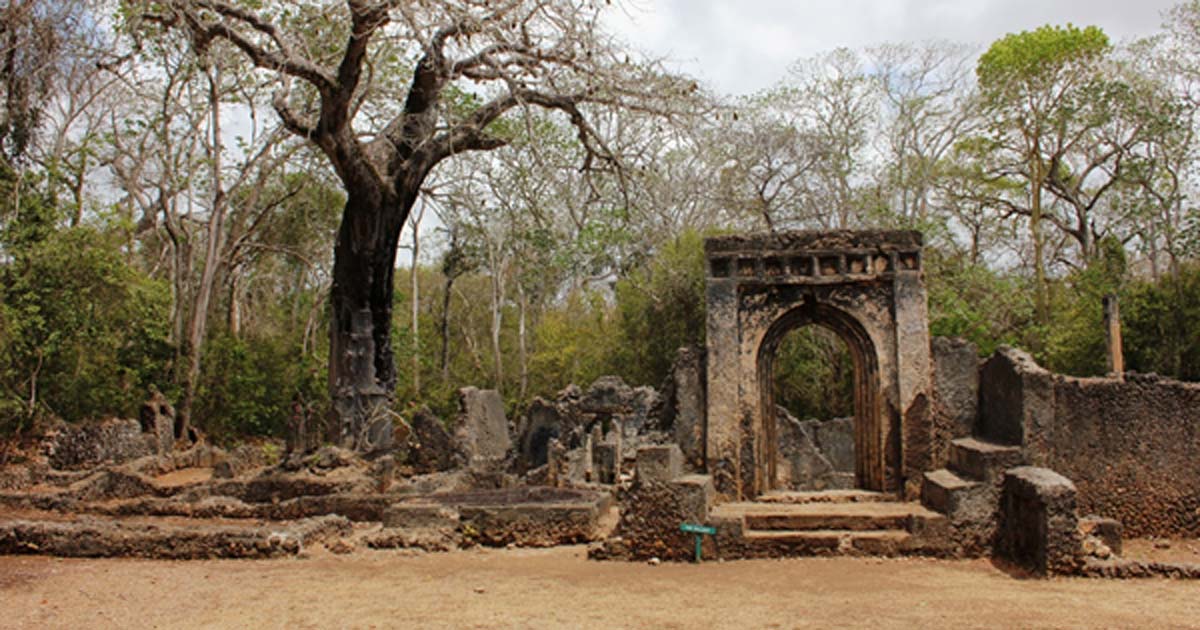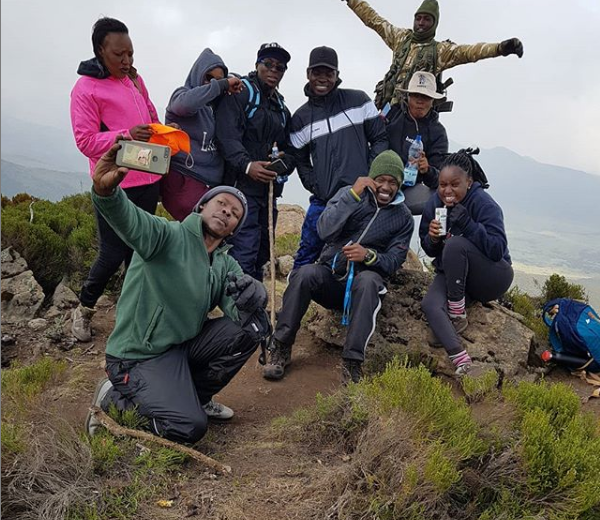Gede Ruins
Gede Ruins are the remnants of a Swahili town in Kilifi County, Kenya. This is one of the surviving Swahili towns along the East African Coast. Located within the Arabuko Sokoke Forest, Gede Ruins occupies 45 acres (18 hectares) of land.
History
Gede Ruins is thought to have come about in the 12th Century as evidenced by a date in Arabic inscribed on one of the pillar tombs at the site. The town was rebuilt with new town walls in the 15th and 16th centuries. The rebuilding is attributed to the emigration of many citizens of Kilwa to Mombasa, Malindi and other locations along the East African Coast.
In the 15th century, Gede (also Gedi) is thought to have been densely populated with about 2,500 inhabitants at the peak of its wealth. However, in the first half of the 17th century, the last families left the town. There are a number of explanations offered in regard to this abandonment of the town.
The Wazimba raid along the East African Coast in 1589 is thought to be one factor. Another factor is the removal of the Sheikh of Malindi and the Portuguese to Mombasa in 1593. Yet another theory given is the falling water table evidenced by the deepening well outside the ‘Great Mosque” at the site of the ruins. And the final one is attributed to disturbances by the Galla, a hostile nomadic tribe from Somalia.
Discovery and archaeology
Gede Ruins was first visited by Sir John Kirk, a British resident of Zanzibar in 1884. After his visit, the site interestingly remained obscured from the British colonialists but was known to the locals until the 1920s. In 1927, it was gazetted as a historical monument and would end up being the first intensely studied site on the East African Coast. Subsequently in 1929, it was declared a protected monument.
In the late 30s, the Public Works Department carried out work on preservation of its crumbling walls. And in 1948, Gede Ruins were declared a national park and an archaeologist appointed as warden. Hence the first archaeological work at the site began under the direction of James Kirkman. Soon after, was the publication of the site.
In 1969, the administration of Gede Ruins was taken over by the Museum Trustees. Currently, the site is under the care of the National Museums of Kenya and is a declared archaeological site.
Surviving structures and wildlife
Nowadays, Gede Ruins are heavily overgrown with beautiful indigenous forest trees, baobabs and tamarind. Initially, the ancient town at Gede was divided by two walls; an outer wall enclosing 45 acres (18 hectares) and an inner wall enclosing 18 acres (7.3 hectares). Within the inner wall were two mosques, a palace or Sheikh’s house, four large houses, several clustered houses and four large pillar tombs comprising the urban core. There were also four other houses and three other mosques.
Between the inner and outer wall, few stone structures have since been identified with the exception of the mosques. Furthermore, the remains of the mosques, palace, residential houses and elaborate pillar tombs have been excavated. There is also evidence of mud thatched dwellings. Immediately beyond the outer wall lies one mosque and several other unidentified structures.
Gede Ruins is hidden deep in the forest which makes it an area teeming with wildlife. Visitors walking the nature trail have access to 40 different species of plants and also get to see lesser ruins throughout the forest. Additionally, they can observe forest birds. The buildings at Gede Ruins which have survived to date were built using coral stones from the Indian Ocean. They are also thought to have belonged to the elite members of the society. The buildings were single story structures with latrines and wells.
At the moment, the Giriama, a Mijikenda tribe, maintain a large community around the Gede Ruins. They view the site as a sacred and spiritual place believing that spirits protect it.

Ruins of Gedi (Gede). Swahili town in Kenya near Malindi. Eastern Africa. Image courtesy of worldatlas.com
References: National Museums of Kenya, Watamu.biz & Wikipedia
Start booking your tours in time for 2021 with Go See Tour, a US based travel agency offering cruises and land vacations to various destinations worldwide.
See more on Travel & Transport
Address & Contact Details
Kilifi County, Kenya








